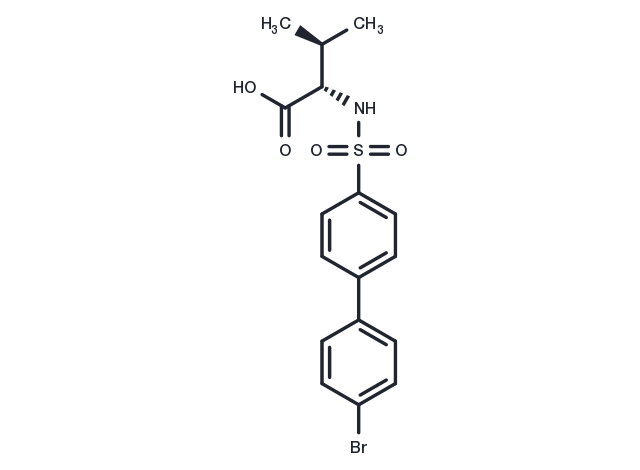store at low temperature
Powder: -20°C for 3 years | In solvent: -80°C for 1 year

PD-166793 is an orally active, potent and selective MMP inhibitor with inhibitory effects on MMP-2, MMP-3 and MMP-13.PD-166793 ameliorates myocardial ischemia and reperfusion injury in a rat model of heart failure.PD-166793 is an orally active, potent and selective MMP inhibitor with inhibitory effects on MMP-2, MMP-3, and MMP-13.

| Pack Size | Availability | Price/USD | Quantity |
|---|---|---|---|
| 2 mg | In stock | $ 52.00 | |
| 5 mg | In stock | $ 89.00 | |
| 10 mg | In stock | $ 139.00 | |
| 25 mg | In stock | $ 289.00 | |
| 50 mg | In stock | $ 463.00 | |
| 100 mg | In stock | $ 693.00 | |
| 500 mg | In stock | $ 1,430.00 | |
| 1 mL * 10 mM (in DMSO) | In stock | $ 98.00 |

| Description | PD-166793 is an orally active, potent and selective MMP inhibitor with inhibitory effects on MMP-2, MMP-3 and MMP-13.PD-166793 ameliorates myocardial ischemia and reperfusion injury in a rat model of heart failure.PD-166793 is an orally active, potent and selective MMP inhibitor with inhibitory effects on MMP-2, MMP-3, and MMP-13. |
| Targets&IC50 | MMP9:7.9 μM, MMP1:6.0 μM, MMP13:8 nM, MMP7:7.2 μM, MMP3:7 nM, MMP2:4 nM |
| In vitro | In rat heart homogenates, PD-166793 at a concentration of 0.1 μM results in a 20% inhibition of AMP deaminase (AMPD) activity[2]. Additionally, when normal human cardiac fibroblasts are treated with PD-166793 at a concentration of 100 μM for 36 hours, there is a significant reduction in MMP‐9 activity[1]. |
| In vivo | Administered at a dosage of 1 mg/kg per day through daily gavage for a duration of 10 weeks, PD-166793 largely prevents the adverse remodeling typically observed in the aortocaval (AV) fistula model[3]. Furthermore, in rats, PD-166793 administered at a dose of 5 mg/kg via oral gavage demonstrates superior pharmacokinetics, with a half-life (t1/2) of 43.6 hours, a maximum concentration (Cmax) of 42.4 µg/mL, and an area under the curve from 0 to infinity (AUC0-∞) of 2822 µg•h/mL[2]. |
| Synonyms | PD-166793-0000, PD 166793, PD166793 |
| Molecular Weight | 412.3 |
| Formula | C17H18BrNO4S |
| CAS No. | 199850-67-4 |
store at low temperature
Powder: -20°C for 3 years | In solvent: -80°C for 1 year
DMSO: 80 mg/mL(194.03 mM), Sonication is recommended.
You can also refer to dose conversion for different animals. More
bottom
Please see Inhibitor Handling Instructions for more frequently ask questions. Topics include: how to prepare stock solutions, how to store products, and cautions on cell-based assays & animal experiments, etc.
PD-166793 199850-67-4 Proteases/Proteasome MMP PD-166793-0000 PD 166793 PD166793 inhibitor inhibit
